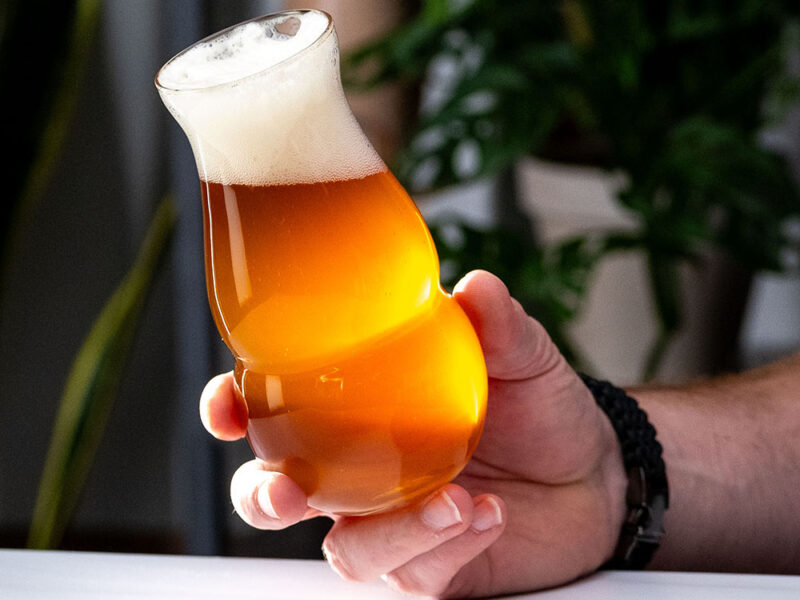Let’s talk about gas—that life-giving substance that turns your craft beer from a flat mess into something worth savoring.
Whether on tap or packaged in bottles and cans, most beer gets its bubbly effervescence from carbon dioxide. While that’s great for something like a crisp, refreshing lager, maltier styles sometimes deserve a little more gaseous attention.
Enter nitrogen—the unheralded component largely responsible for the cult-like following behind many a smooth, creamy milk stout. When a beer is served “on nitro,” bars use a mix that’s approximately three parts nitrogen to one part carbon dioxide. The pressurized beer is pumped through a restrictor plate with tiny holes, slowing the flow of the brew and rousing the nitrogen. The result? Liquid magic.
“Most people really love it,” says Craig Bradley of Dallas’ Lakewood Brewery. “But some people think it makes the beer seem flat, because you associate beer with that carbed, bubbly mouthfeel.”
Why so “flat”? Compared to traditional carbon dioxide, nitrogen forms denser, smaller bubbles that are largely insoluble in liquid and less prone to breakage (thanks, nitrogen-based atmosphere!). The result? A pillowy, longer-lasting head and a thick, creamy mouthfeel that’s like heaven in a glass. As for appearance, there is nothing quite as mesmerizing as the uniformly sized bubbles that rise up the center and cascade back down the side.
In addition to differences in appearance and mouthfeel, nitrogen and carbon dioxide produce subtle variations in taste. Bradley is plenty familiar with this, thanks to the increasing popularity of Lakewood’s flagship beer, Temptress Imperial Milk Stout.
“Temptress on CO2 emphasizes that bitter vanilla and dark chocolate,” he shares, “but on nitro, it really enhances the milk chocolate.” This is because carbon dioxide has a tendency to bring out bitter qualities in beer, which makes nitro a slightly more controversial choice for serving hop-forward beers.
The brewers at Colorado’s Left Hand Brewing are no strangers to this concept. Though they’re most famous for their Milk Stout, they frequently serve their Sawtooth Ale on nitro, and breweries such as Ballast Point and Victory have done the same with Sculpin and HopDevil, respectively. This dials down any sharp bitterness for a smoother, mellower experience.
But what about beer to go? Though Guinness had been packaging its nitro namesake since 1989, Left Hand made a splash at the 2011 Great American Beer Fest by becoming the first U.S. brewery to do so with its extremely popular Milk Stout. Rejecting the “Smoothifier” widget formula perfected by Guinness, Left Hand spent more than two years developing a top-secret formula for gassing its bottled beer from filtration to fermentation to packaging. All you (or your waitress) have to do is pour it right—hard, fast and into a non-tilted glass. We know, this refutes everything you’ve ever been taught about pouring at a 45-degree tilt. But take their word for it on this one—it’s a hard pour that agitates the nitrogen, resulting in that one-of-a-kind sip.
Colorado’s Oskar Blues is also in the nitro packaging game now, with the release of its Old Chub Nitro in a widget-fueled can (which landed recently at some Flying Saucers). Without the typical carbonic bite, the Scotch ale’s malt profile really shines, allowing you to more thoroughly explore those rich, smoky toffee and caramel flavors.
Check your local Flying Saucer’s beer menu for their nitro offerings and see if you can taste the difference.




